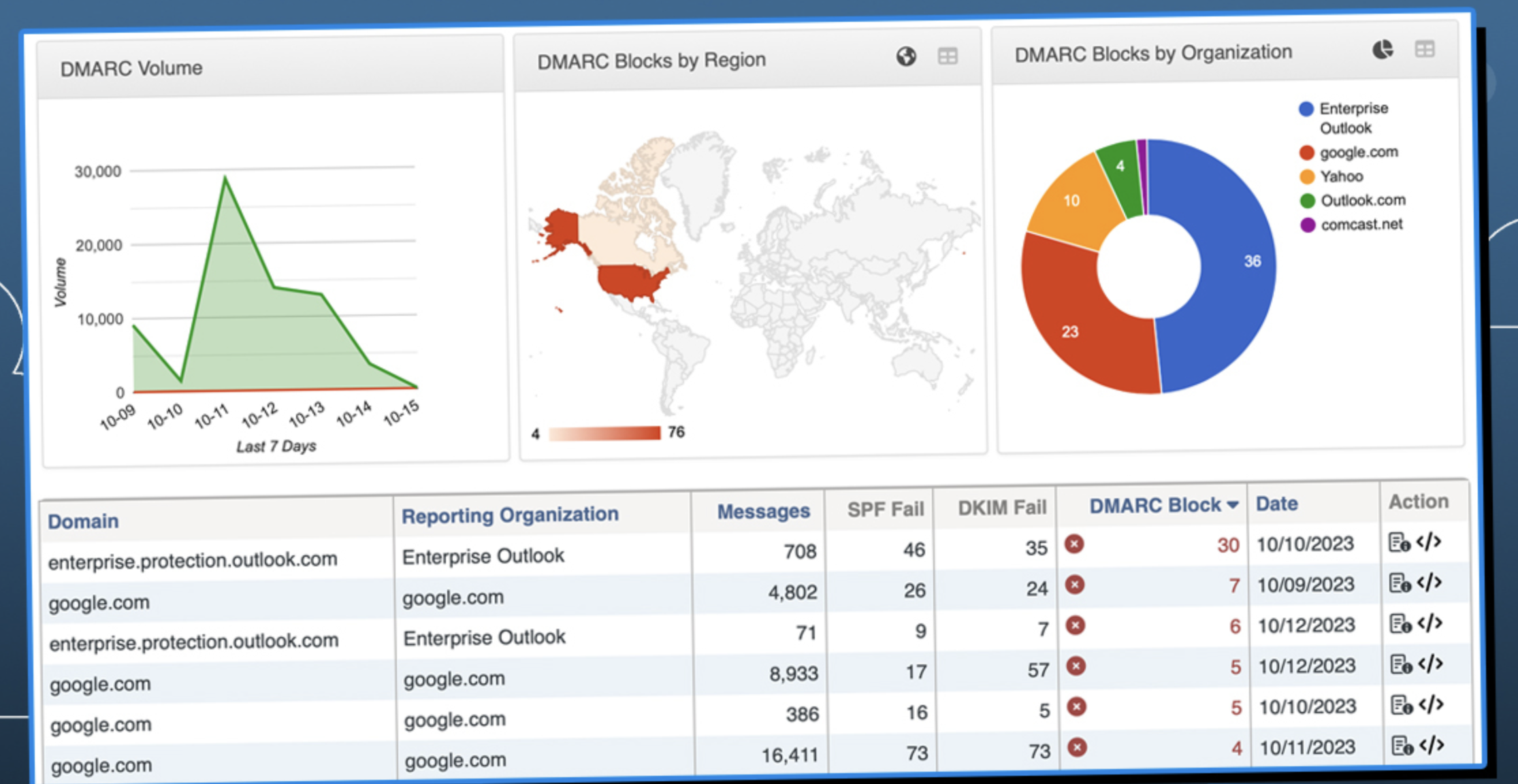Feature set
Primarily an email marketing platform, ReachMail integrates DMARC management into its broader suite. It offers features like SPF, DKIM, and DMARC record creation and basic reporting within its paid plans, simplifying DMARC for its marketing users.
We found the DMARC features to be functional for fundamental compliance, but they are not the main focus of the product. For those seeking a comprehensive DMARC monitoring tool, the capabilities might feel somewhat limited compared to dedicated solutions. It covers the essentials for authentication, but deeper analysis and proactive threat intelligence are less prominent.
As an open-source, self-hosted solution built on the ELK stack (Elasticsearch, Logstash, Kibana), ELK DMARC offers immense flexibility and control. We observed that its feature set is robust for DMARC report parsing, aggregation, and visualization, leveraging Kibana's powerful dashboards.
However, deploying and maintaining ELK DMARC requires significant technical expertise in server management, Docker, and the ELK stack itself. While powerful, it lacks out-of-the-box advanced features like AI-driven insights or direct DMARC record management from a UI, which commercial platforms often provide.
































 0 / 5(0)
0 / 5(0) 0 / 5(0)
0 / 5(0)

